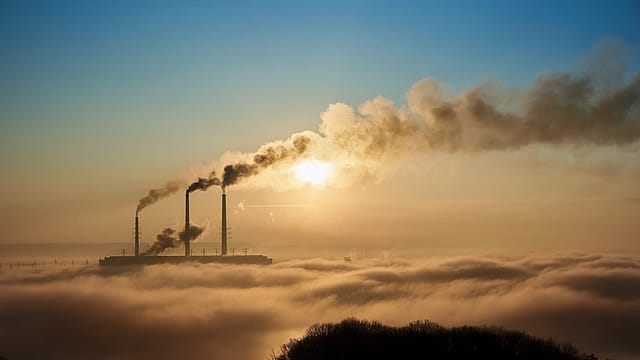Delhi ranked most polluted capital city globally for 4th consecutive year: IQAir
ADVERTISEMENT

India emerged as the world’s third most polluted country, according to the findings unveiled by the Swiss organisation ‘IQAir’ report. The report titled 'World Air Quality Report 2023', spotlighted India with an annual PM2.5 concentration averaging at 54.4 micrograms per cubic metre, trailing behind only Bangladesh and Pakistan in its immediate vicinity.
India’s annual average PM2.5 concentrations rose slightly in 2023 to 54.4 µg/ m3 compared to 53.3 µg/m3 in 2022, the report reveals.
Northern India and Delhi struggle with smoke from crop burning, vehicle emissions, coal burning, waste burning, and biomass burning for heat and cooking. Annual crop burning in northern India and neighbouring Pakistan regularly results in Delhi experiencing emergency-level air quality days. Vehicle emissions are responsible for 40% of PM2.5 emissions in the nation’s capital. In response, older vehicles were banned in Delhi. The number of cars on the road has dropped by 35% since the ban took effect in late 2018.
Bangladesh retained its unenviable crown as the most polluted nation, registering a PM2.5 level of 79.9 micrograms per cubic metre, while Pakistan closely followed at 73.7 micrograms per cubic metre.
Additionally, Delhi emerged as the planet's most polluted capital city for the fourth consecutive year. The city's PM2.5 concentration climbed to 92.7 micrograms per cubic metre in 2023 from 89.1 micrograms per cubic metre in the previous year.
December 2025
The annual Fortune 500 India list, the definitive compendium of corporate performance, is out. This year, the cumulative revenue of the Fortune 500 India companies has breached $2 trillion for the first time. Plus, find out which are the Best B-schools in India.
The air quality regression is stark when juxtaposed with the preceding year (2022), where India held the eighth spot with an average PM2.5 level of 53.3 micrograms per cubic metre.
Begusarai, a town in Bihar, ranked as the most polluted metropolitan area globally. Begusarai recorded an average PM2.5 concentration of 118.9 micrograms per cubic metre.
The 2022 IQAir report highlighted that approximately 60% of Indian cities reported PM2.5 levels exceeding WHO guidelines by sevenfold.
The Central and South Asia region reports data from 10 nations. All four of 2023’s most polluted countries in the world are hosted in this region, including Bangladesh, India, Tajikistan, and Pakistan. In addition, this region is home to the top ten most polluted global cities. Included are highly populated and historically polluted cities such as Delhi, India and Lahore, Pakistan.
The 2022 World Air Quality Report drew data from 7,323 locations across 131 countries, regions, and territories. In 2023, this dataset expanded to encompass 7,812 locations spanning 134 countries, regions, and territories, painting a broader picture of the global air quality landscape.
